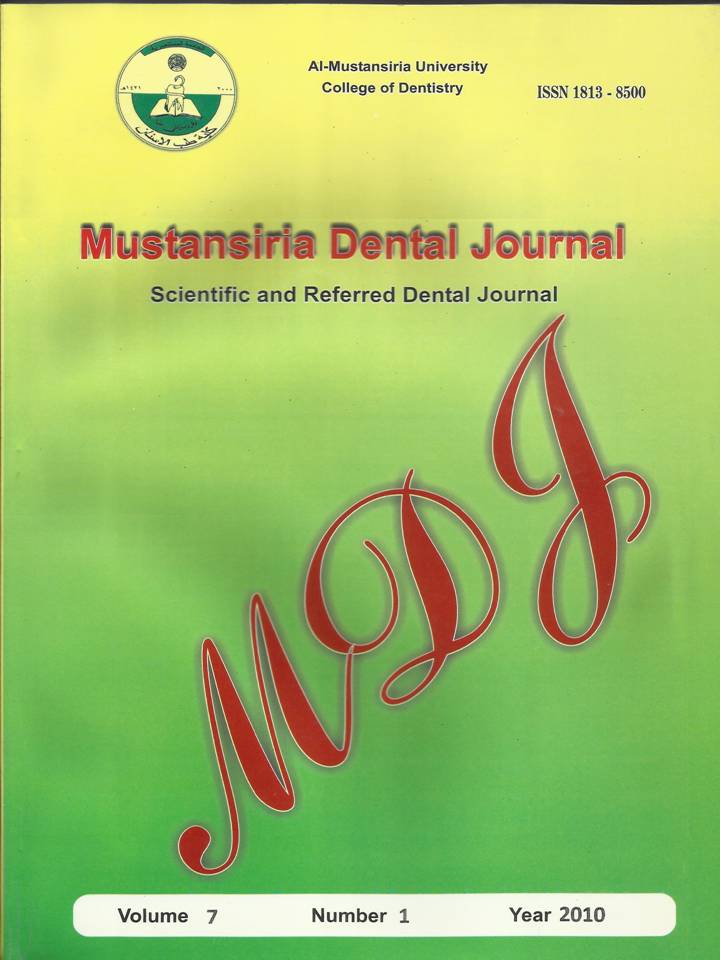Brackets bonding failure after in-office bleaching in vivo
DOI:
https://doi.org/10.32828/mdj.v7i1.366Keywords:
Key words: Bleaching, Bonding, Bracket failure, in vivoAbstract
The aim of this in vivo study was to determine the effect of high concentration
35% hydrogen peroxide bleaching agent on metallic brackets bonding failure. Forty
patients who received first orthodontic treatment phase, were included in this study.
A split mouth technique was used; one arch exposed to in-office bleaching gel
containing 35% hydrogen peroxide for 30 minutes, while the unbleached arch served
as the control. Patients were divided into four groups: First two groups, the brackets
bonded 48 hours after bleaching while the third and fourth groups, brackets bonded 3
weeks after bleaching. The bracket failure was computed using independent T-test.
The higher bracket failure occurs in mandibular bleached group 48 hours before
bonding (18.33%) while the lowest bracket failure occurs in unbleached groups (1.67
%). Significant differences were showed in bracket failure between the mandibular
bleached teeth 3 weeks before bonding and those 48 hours before bonding. Adhesive
Remnant Index scores revealed that the majority of failure in bleached teeth occurred
in the enamel/resin interface. The 48 hours bleached teeth before bonding
significantly had a high bracket failure. We should increase the time lapse between
bleaching and bonding procedure more than 3 weeks to improve the bracket bonding
strength.
Downloads
Published
Issue
Section
License
The Journal of Mustansiria Dental Journal is an open-access journal that all contents are free of charge. Articles of this journal are licensed under the terms of the Creative Commons Attribution International Public License CC-BY 4.0 (https://creativecommons.org/licenses/by/4.0/legalcode) that licensees are unrestrictly allowed to search, download, share, distribute, print, or link to the full texts of the articles, crawl them for indexing and reproduce any medium of the articles provided that they give the author(s) proper credits (citation). The journal allows the author(s) to retain the copyright of their published article.
Creative Commons-Attribution (BY)









